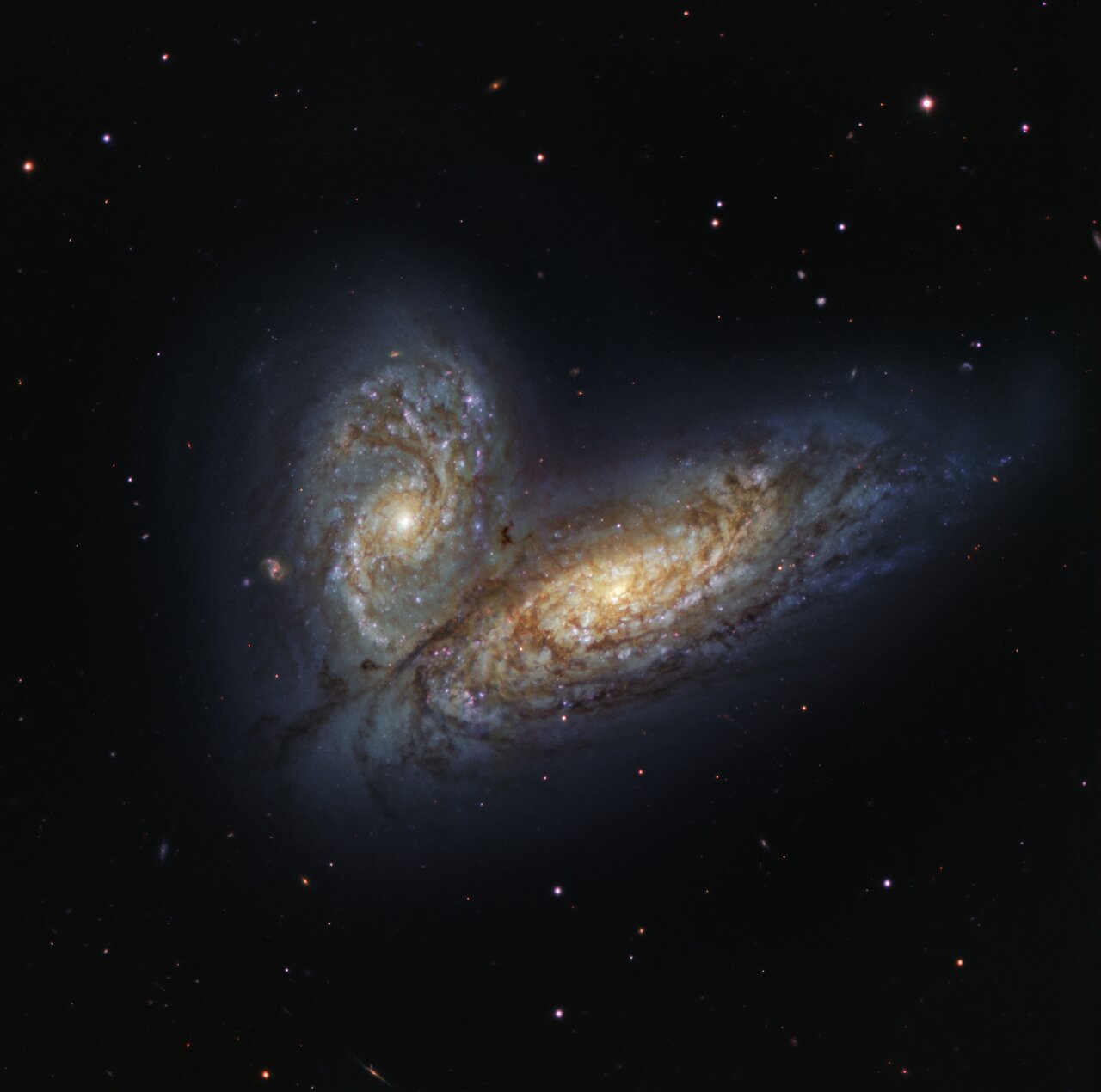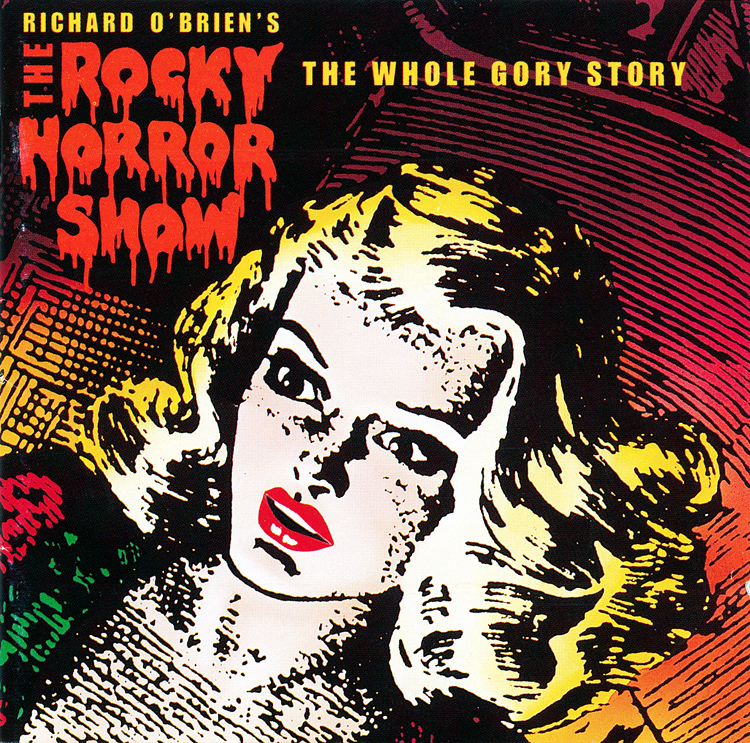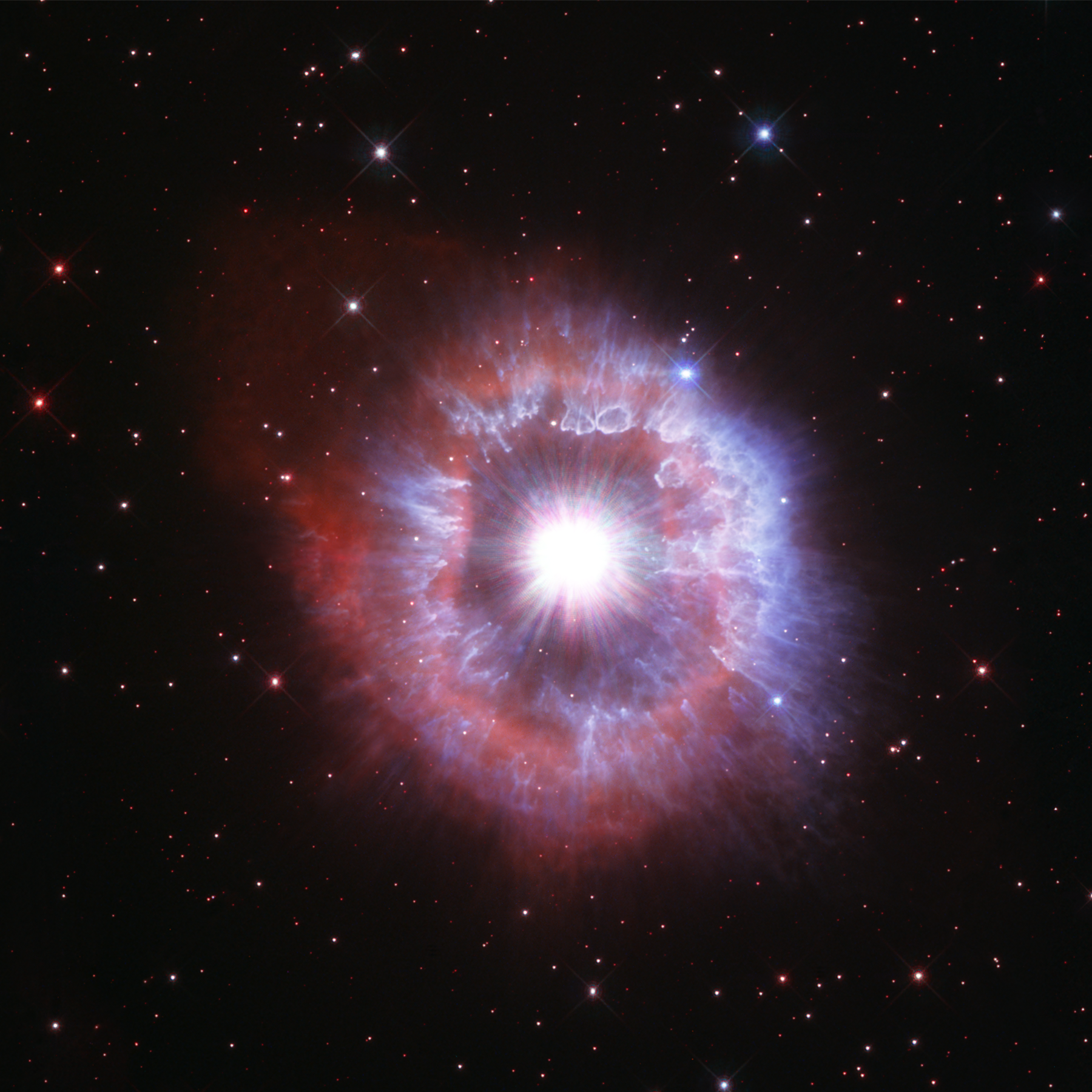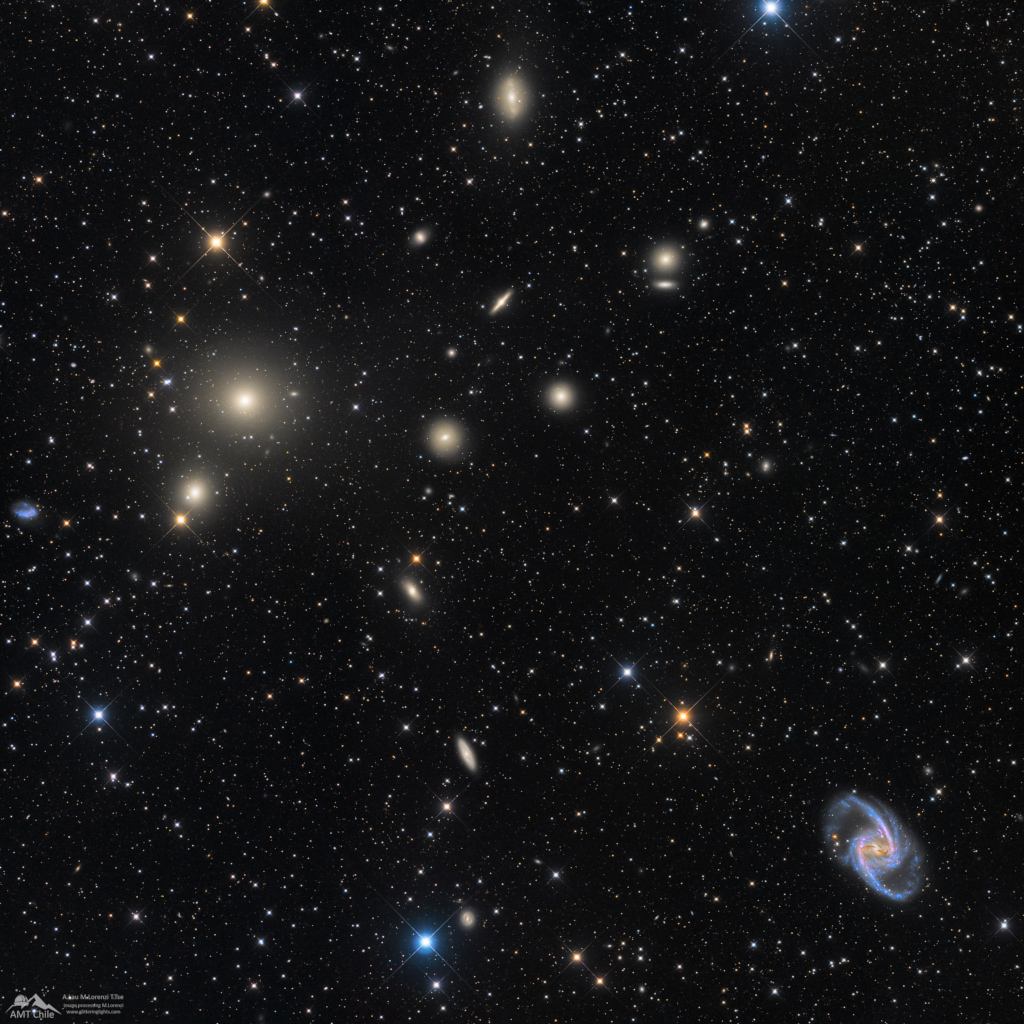Around 60 million light-years away, in the constellation Virgo, the two galaxies NGC4567 and NGC4568, nicknamed the Butterfly Galaxies due to their wing-like structure, are beginning to collide and merge into each other. This is depicted in this picture captured by the FOcal Reducer and low dispersion Spectrograph 2 (FORS2) instrument, which is mounted on ESO’s Very Large Telescope (VLT) at the Paranal Observatory in the Chilean Andes. Galaxy collisions are not unusual in the Universe. We may imagine them to be violent and catastrophic, but in reality they are surprisingly peaceful, like a waltz performed by stars, gas and dust, choreographed by gravity. This kind of collision and merger is also thought to be the eventual fate of the Milky Way, which scientists believe will undergo a similar interaction with our neighbouring galaxy Andromeda. FORS2 is often nicknamed Paranal’s “Swiss Army knife” for its incredible versatility, and it’s in fact one of our most demanded instruments. Besides capturing images like this one it can also take spectra of up to several tens of cosmic objects simultaneously, or study polarised light. This image was created as part of the ESO Cosmic Gems programme, an outreach initiative to produce images of interesting, intriguing or visually attractive objects using ESO telescopes, for the purposes of education and public outreach. The programme makes use of telescope time that cannot be used for science observations. All data collected may also be suitable for scientific purposes, and are made available to astronomers through ESO’s science archive.

Charles Douglas Musselwhite (born January 31, 1944) is an American electric blues harmonica player and bandleader, one of the white bluesmen who came to prominence in the early 1960s, along with Mike Bloomfield and Paul Butterfield. He has often been identified as a “white bluesman”.Musselwhite was reportedly the inspiration for Elwood Blues; the character played by Dan Aykroyd in the 1980 film, The Blues Brothers.
Musselwhite was born in Kosciusko, Mississippi to white parents. Originally claiming to be of partly Choctaw descent, in a 2005 interview he said his mother had told him he was of distant Cherokee descent. His family considered it natural to play music. His father played guitar and harmonica, his mother played piano, and a relative was a one-man band.
At the age of three, Musselwhite moved to Memphis, Tennessee. When he was a teenager, Memphis experienced the period when rockabilly, western swing, and electric blues were combining to give birth to rock and roll. That period featured Elvis Presley, Jerry Lee Lewis, Johnny Cash, and lesser-known musicians such as Gus Cannon, Furry Lewis, Will Shade, and Johnny Burnette. Musselwhite supported himself by digging ditches, laying concrete and running moonshine in a 1950 Lincoln automobile. This environment was a school for music as well as life for Musselwhite, who eventually acquired the nickname Memphis Charlie.
see full post...Philip Morris Glass (born January 31, 1937) is an American composer and pianist. He is widely regarded as one of the most influential composers of the late 20th century. Glass’s work has been associated with minimalism, being built up from repetitive phrases and shifting layers. Glass describes himself as a composer of “music with repetitive structures”, which he has helped evolve stylistically.
Glass founded the Philip Glass Ensemble, with which he still performs on keyboards. He has written fifteen operas, numerous chamber operas and musical theatre works, fourteen symphonies, twelve concertos, eight string quartets and various other chamber music, and several film scores. Three of his film scores have been nominated for Academy Awards.
Glass was born in Baltimore, Maryland, the son of Ida (née Gouline) and Benjamin Charles Glass. His family were Lithuanian-Jewish emigrants. His father owned a record store and his mother was a librarian. In his memoir, Glass recalls that at the end of World War II his mother aided Jewish Holocaust survivors, inviting recent arrivals to America to stay at their home until they could find a job and a place to live. She developed a plan to help them learn English and develop skills so they could find work. His sister, Sheppie, would later do similar work as an active member of the International Rescue Committee.
see full post...Roosevelt Sykes (January 31, 1906 – July 17, 1983) was an American blues musician, also known as “the Honeydripper“.
Sykes was born the son of a musician in Elmar, Arkansas. “Just a little old sawmill town”, Sykes said of his birthplace. The Sykes family was living in St. Louis by 1909. Sykes often visited his grandfather’s farm near West Helena. He began playing the church organ around the age of ten. “Every summer I would go down to Helena to visit my grandfather on his farm,” he told biographer Valerie Wilmer. “He was a preacher and he had an organ I used to practice on, trying to learn how to play. I always liked the sound of the blues, liked to hear people singing, and since I was singing first, I was trying to play like I sang.” Sykes was baptized at 13 years old, his lifelong beliefs never conflicting with playing the blues.
At age 15, he went on the road playing piano in a barrelhouse style of blues. Like many bluesmen of his time, he traveled around playing to all-male audiences in sawmill, turpentine and levee camps along the Mississippi River, sometimes in a duo with Big Joe Williams, gathering a repertoire of raw, sexually explicit material. In 1925 Sykes met Leothus “Lee” Green, a piano player in a West Helena theater playing a mix of blues, ragtime, waltz, and jazz to accompany silent movies. They worked the Louisiana and Mississippi work camp and roadhouse circuit together, with the older man acting as mentor and protector to Sykes. “I just been pickin’ a little cotton,” Sykes would say from the stage, “and pickin’ a little piano.” The more experienced Green taught him the style, characterized by separate bass and treble rhythms, that would become the basis for “44 Blues“. Sykes’ wanderings eventually brought him back to St. Louis, Missouri, where he met St. Louis Jimmy Oden, the writer of the blues standard “Goin’ Down Slow“.
see full post...Franz Peter Schubert (German: [ˈfʁant͡s ˈpeːtɐ ˈʃuːbɐt]; 31 January 1797 – 19 November 1828) was an Austrian composer of the late Classical and early Romantic eras. Despite his short lifetime, Schubert left behind a vast oeuvre, including more than 600 secular vocal works (mainly lieder), seven complete symphonies, sacred music, operas, incidental music, and a large body of piano and chamber music. His major works include “Erlkönig” (D. 328), the Piano Quintet in A major, D. 667 (Trout Quintet), the Symphony No. 8 in B minor, D. 759 (Unfinished Symphony), the “Great” Symphony No. 9 in C major, D. 944, the String Quintet (D. 956), the three last piano sonatas (D. 958–960), the opera Fierrabras (D. 796), the incidental music to the play Rosamunde (D. 797), and the song cycles Die schöne Müllerin (D. 795) and Winterreise (D. 911).
Born in the Himmelpfortgrund suburb of Vienna, Schubert showed uncommon gifts for music from an early age. His father gave him his first violin lessons and his elder brother gave him piano lessons, but Schubert soon exceeded their abilities. In 1808, at the age of eleven, he became a pupil at the Stadtkonvikt school, where he became acquainted with the orchestral music of Haydn, Mozart, and Beethoven. He left the Stadtkonvikt at the end of 1813, and returned home to live with his father, where he began studying to become a schoolteacher. Despite this, he continued his studies in composition with Antonio Salieri and still composed prolifically. In 1821, Schubert was admitted to the Gesellschaft der Musikfreunde as a performing member, which helped establish his name among the Viennese citizenry. He gave a concert of his own works to critical acclaim in March 1828, the only time he did so in his career. He died eight months later at the age of 31, the cause officially attributed to typhoid fever, but believed by some historians to be syphilis.
Appreciation of Schubert’s music while he was alive was limited to a relatively small circle of admirers in Vienna, but interest in his work increased greatly in the decades following his death. Felix Mendelssohn, Robert Schumann, Franz Liszt, Johannes Brahms and other 19th-century composers discovered and championed his works. Today, Schubert is ranked among the greatest composers in the history of Western music and his work continues to be admired. Schubert died in Vienna, aged 31, on 19 November 1828, at the apartment of his brother Ferdinand. The cause of his death was officially diagnosed as typhoid fever, though other theories have been proposed, including the tertiary stage of syphilis. It was near Beethoven, whom he had admired all his life, that Schubert was buried by his own request, in the village cemetery of Währing, Vienna. He had served as a torchbearer at Beethoven’s funeral a year before his own death.
see full post...The third installment of Theatre 55’s monstrous production at the Mixed Blood Theater on the historical West Bank of Minneapolis. Sunday January 30th 2022 3pm matinee. Music with Victor Zupanc, Jamie Carter, Lyra Olson and mick laBriola.

AG Carinae (AG Car) is a star in the constellation Carina. It is classified as a luminous blue variable (LBV) and is one of the most luminousstars in the Milky Way. The great distance (20,000 light-years) and intervening dust mean that the star is not usually visible to the naked eye; its apparent brightness varies erratically between magnitude 5.7 and 9.0.

Roger Humphries (born January 30, 1944) is an American jazzdrummer. Born into a family of ten children in Pittsburgh, Pennsylvania, Humphries began playing drums at age four, and went professional at age 14. He led an ensemble at Carnegie Hall at age 16. Early in the 1960s, he began touring with jazz musicians; one of his more prominent gigs was in a trio with Stanley Turrentine and Shirley Scott in 1962. In 1964, he worked with Horace Silver, appearing on the album Song for My Father, where he played on four tracks, including the title tune. (On the same album Roy Brooks played on two tracks from a session recorded a year earlier). Following this Humphries drummed for Ray Charles.
see full post...Charles “Buddy” Montgomery(January 30, 1930 – May 14, 2009) was an American jazz vibraphonistand pianist. He was the younger brother of Wes and Monk Montgomery, a guitarist and bassist respectively.
see full post...Edward Brian “Tubby” Hayes (30 January 1935 8 June 1973) was an English jazz multi-instrumentalist, best known for his tenor saxophone playing in groups with fellow sax player Ronnie Scottand with trumpeter Jimmy Deuchar.
see full post...Ahmed Abdul-Malik (born Jonathan Tim, Jr.; January 30, 1927 – October 2, 1993) was an American jazz double bassist and oud player. Abdul-Malik is remembered for integrating Middle Eastern and North African music styles in his jazz music. He was a bass player for Art Blakey, Earl Hines, Randy Weston, and Thelonious Monk, among others.
Abdul-Malik was most active as a jazz musician from the mid-1950s to the mid-1960s. He recorded half a dozen albums as leader, which have been described as containing a “refreshing” fusion of jazz with Arabic and African music. During this time he was also described as “a hard bop bassist of some distinction”. As an oud player he did a tour of South America for the United States Department of State and performed at an African jazz festival in Morocco.
see full post...David Roy Eldridge (January 30, 1911 – February 26, 1989), nicknamed “Little Jazz“, was an American jazz trumpeter. His sophisticated use of harmony, including the use of tritone substitutions, his virtuosic solos exhibiting a departure from the dominant style of jazz trumpet innovator Louis Armstrong, and his strong impact on Dizzy Gillespie mark him as one of the most influential musicians of the swing era and a precursor of bebop.
Eldridge was born on the North Side of Pittsburgh, Pennsylvania on January 30, 1911, to parents Alexander, a wagon teamster, and Blanche, a gifted pianist with a talent for reproducing music by ear, a trait that Eldridge claimed to have inherited from her. Eldridge began playing the piano at the age of five; he claims to have been able to play coherent blues licks at even this young age.The young Eldridge looked up to his older brother, Joe Eldridge (born Joseph Eldridge, 1908, North Side of Pittsburgh, Pennsylvania, died March 5, 1952), particularly because of Joe’s diverse musical talents on the violin, alto saxophone, and clarinet. Roy took up the drums at the age of six, taking lessons and playing locally. Joe recognized his brother’s natural talent on the bugle, which Roy played in a local church band, and tried to convince Roy to play the valved trumpet. When Roy began to play drums in his brother’s band, Joe soon convinced him to pick up the trumpet, but Roy made little effort to gain proficiency on the instrument at first. It was not until the death of their mother, when Roy was eleven, and his father’s subsequent remarriage that Roy began practicing more rigorously, locking himself in his room for hours, and particularly honing the instrument’s upper register. From an early age, Roy lacked proficiency at sight-reading, a gap in his musical education that would affect him for much of his early career, but he could replicate melodies by ear very effectively.
see full post...Theatre 55’s second performance at the Mixed Blood Theater. Saturday January 29th 2022 7pm. Music with Victor Zupanc, Jamie Carter, Lyra Olson and mick laBriola.

Named for the southern constellation toward which most of its galaxies can be found, the Fornax Cluster is one of the closest clusters of galaxies. About 62 million light-years away, it is almost 20 times more distant than our neighboring Andromeda Galaxy, and only about 10 percent farther than the better known and more populated Virgo Galaxy Cluster. Seen across this two degree wide field-of-view, almost every yellowish splotch on the image is an elliptical galaxy in the Fornax cluster. Elliptical galaxies NGC 1399 and NGC 1404 are the dominant, bright cluster members toward the upper left (but not the spiky foreground stars). A standout barred spiral galaxy NGC 1365 is visible on the lower right as a prominent Fornax cluster member.

Franco Cerri (29 January 1926 – 18 October 2021) was an Italian guitarist and double bassist.
Cerri was born in Milan and learned to play guitar when he was 17. In 1945 he became a member of the group led by Gorni Kramer and joined the orchestra of the television show Buone vacanze. He played double bass in addition to guitar starting in the 1950s, such as with Chet Baker and Buddy Collette. He has also played with Dizzy Gillespie, Johnny Griffin, Stéphane Grappelli, Lars Gullin, Billie Holiday, Lee Konitz, Gerry Mulligan, Lou Bennett, Bud Shank, Tony Scott, Django Reinhardt, Phil Woods, and the Modern Jazz Quartet. He cited as influences Django Reinhardt, Barney Kessell, and René Thomas. Cerri has led quartets and quintets with Tullio De Piscopo, Pino Presti, Gianluigi Trovesi, Flavio Ambrosetti, and Jean-Luc Ponty. In 1980 he formed a duo with pianist Enrico Intra, with whom he founded the “Civica Scuola di Jazz” in Milan.
On 1 January 2006, he was knighted by President Carlo Azeglio Ciampi. Cerri died on 18 October 2021, at the age of 95
see full post...Eddie Taylor (January 29, 1923 – December 25, 1985) was an American electric blues guitarist and singer.
Born Edward Taylor in Benoit, Mississippi, as a boy Taylor taught himself to play the guitar. He spent his early years playing at venues around Leland, Mississippi, where he taught his friend Jimmy Reed to play the guitar. With a guitar style deeply rooted in the Mississippi Delta tradition, Taylor moved to Chicago, Illinois, in 1948.
Taylor never achieved the stardom of some of his contemporaries in the Chicago blues scene, he was nevertheless an integral part of that era. He is especially noted as a main accompanist for Jimmy Reed; he also worked for John Lee Hooker, Big Walter Horton, Sam Lay, and others. Earwig Music Company recorded him with Kansas City Red and Big John Wrencher for the album Original Chicago Blues. He later teamed up with Earring George Mayweather, and they jointly recorded several tracks, including “You’ll Always Have a Home” and “Don’t Knock at My Door”. Several of these were released as singles, of which “Big Town Playboy” and “Bad Boy”, issued by Vee Jay Records, were local hits in the 1950s, but Taylor’s singles generally were not commercially successful.
see full post...